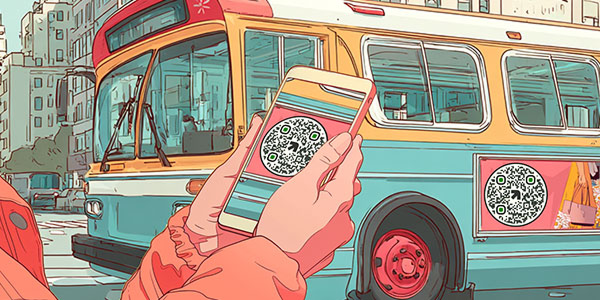QR Codes Replace Barcodes
UPC Barcodes Disappearing Forever, the Shift to 2D QR Codes
May 8, 2024
The UPC code is going away... What does this mean for businesses that sell through retail and e-tail?
The iconic Universal Product Code (UPC) barcode, launched in 1974, has been a staple in retail for decades, offering a simple solution to inventory management and pricing at cash registers. However, as technology advances and consumer demands evolve, the UPC barcode is making way for its more sophisticated successor: the 2D Barcode, commonly known as the QR Code. This shift is not just a minor upgrade; it's a complete transformation in how businesses interact with customers, manage sales and operations.
Let's explore!
Enhanced Customer Engagement
One of the most significant advantages of 2D barcodes is their ability to bridge the gap between in-store experiences and digital convenience. With a simple scan using a smartphone, customers can access a wealth of information about a product directly from its tag or packaging. This connected technology turns every product into a portal, offering detailed product descriptions, user manuals, promotional videos, and even interactive experiences. For brands, this means an unparalleled opportunity to engage customers at the point of sale, and beyond, providing them with all the information they might seek and thereby influencing purchasing decisions positively.
Furthermore, 2D barcodes can be customized to support loyalty programs, enabling customers to easily register their purchases and earn rewards. This not only enhances the shopping experience but also fosters a closer connection between brands and their consumers, making every scan a step towards building lasting and meaningful relationships.
Revolutionizing Inventory Management
Beyond customer interaction, 2D barcodes offer vast improvements in inventory management. Unlike UPC barcodes that store limited information, 2D barcodes can hold extensive data about a product, including its origin, batch number, expiration date, and more. This traceability is crucial for businesses in ensuring the authenticity of their products and is increasingly demanded by consumers concerned about the provenance of their purchases.
The dynamic nature of 2D barcodes also allows for real-time tracking of inventory, not only at the back of the house but throughout the entire supply chain. Businesses can identify exactly where a product is, from the moment it leaves the manufacturing facility to when it lands in the hands of a customer. This means improved efficiency in stock management, reduced losses due to expired or misplaced products, and enhanced ability to recall products swiftly if necessary.

Don't link QR codes to your homepage
Linking a generated QR code that you create to your homepage creates a poor customer experience that lacks relevant and contextual information.
Read MoreQR Code as the UPC Replacement
The transition from UPC barcodes to QR codes represents a significant leap towards the future of retail, where every product offers a digital touchpoint for customer engagement. By adopting 2D barcodes, businesses can leverage smarter labels to cater to the modern consumer's need for information, transparency, and convenience. This shift not only enhances the shopping experience but also streamlines operations, making inventory management a seamless part of the business process.
The move towards 2D barcoding is reshaping retail, turning each product into a rich source of engagement and information. As we look to the future, it's clear that the QR Code is set to replace the UPC barcode, heralding a new era of interactive shopping experiences and operational excellence.
For brands and retailers, now is the time to adapt to this change. By integrating 2D barcodes into their products and systems, companies can stay ahead in a competitive market, offering unique value propositions that resonate with the digitally savvy consumer while optimizing and improving their inventory processes.
The evolution from UPC barcodes to 2D barcodes like QR codes is revolutionizing the retail industry. By enhancing customer engagement and transforming inventory management, QR codes are proving to be a superior alternative that meets the demands of both businesses and consumers.
So...
As technology continues to evolve, the adoption of 2D barcodes will undoubtedly become a standard, making now the perfect time for brands to embrace this trend and explore the opportunities it presents. To get ahead, book time below and find out the best way to start the conversion now.
Connect Directly with Your Customers
Use Digiphy to connect with your customers at critical moments of interest. Collect customer information, educate, increase reorders and more.
Book a Demo

.png)


